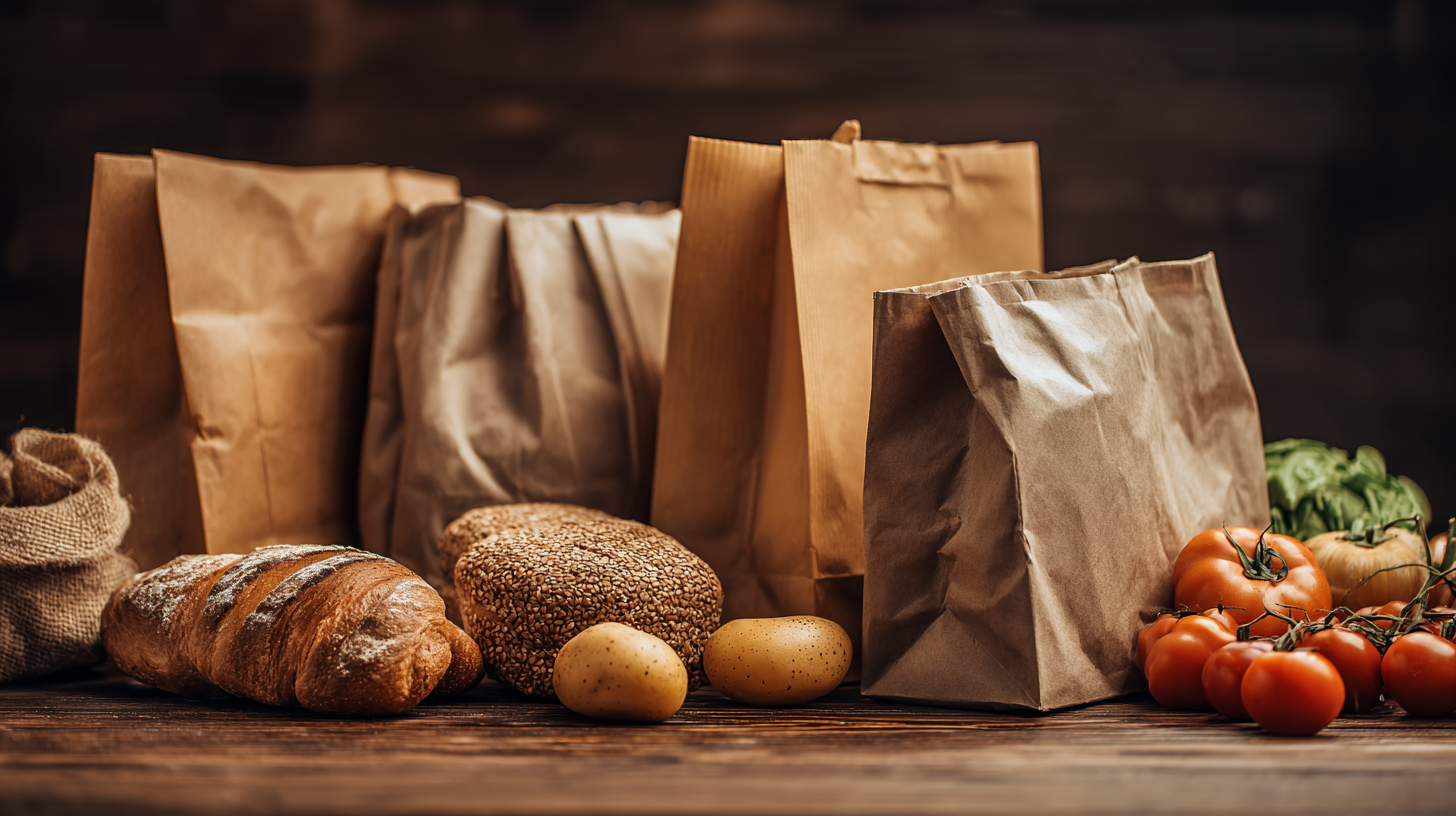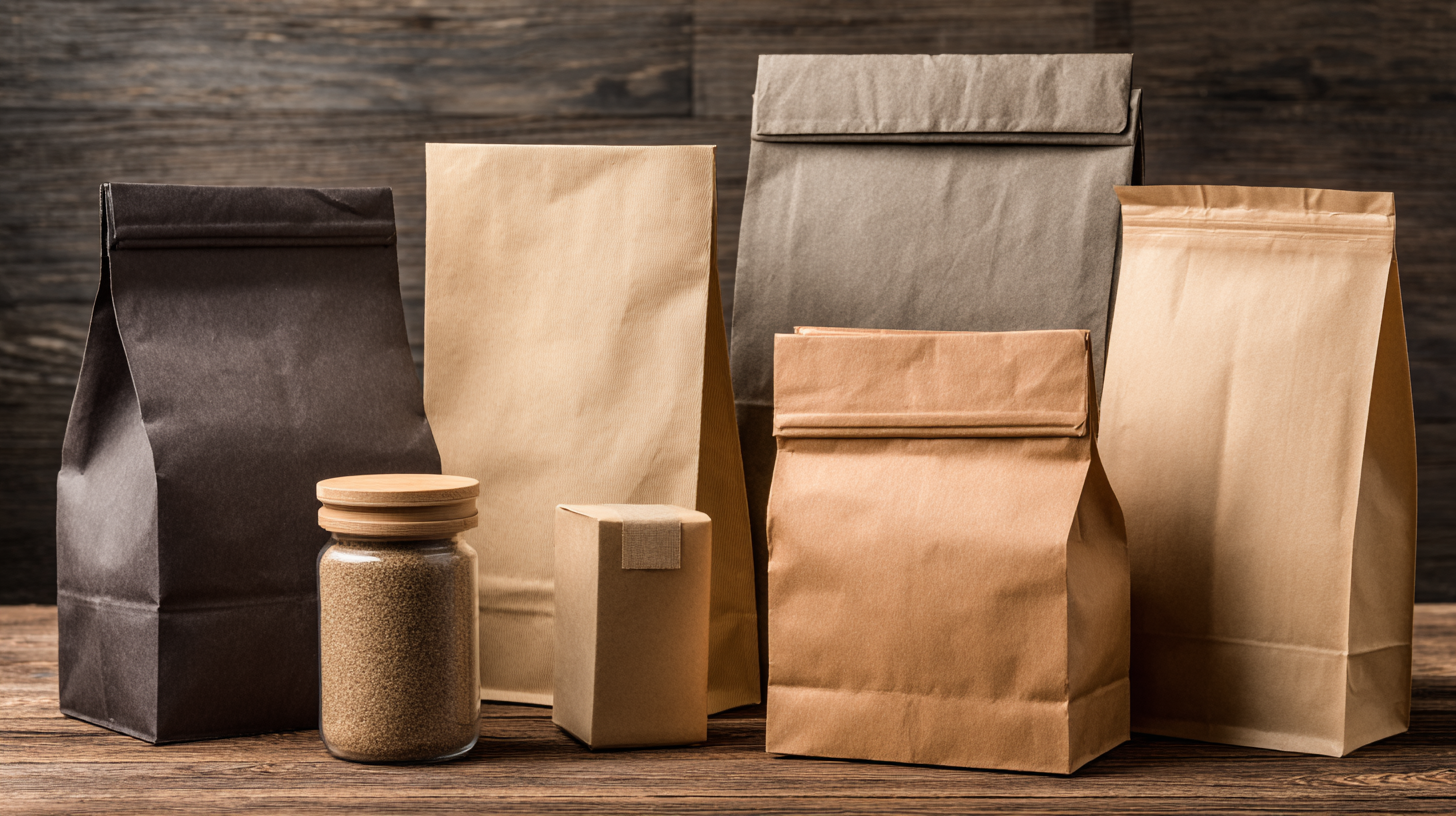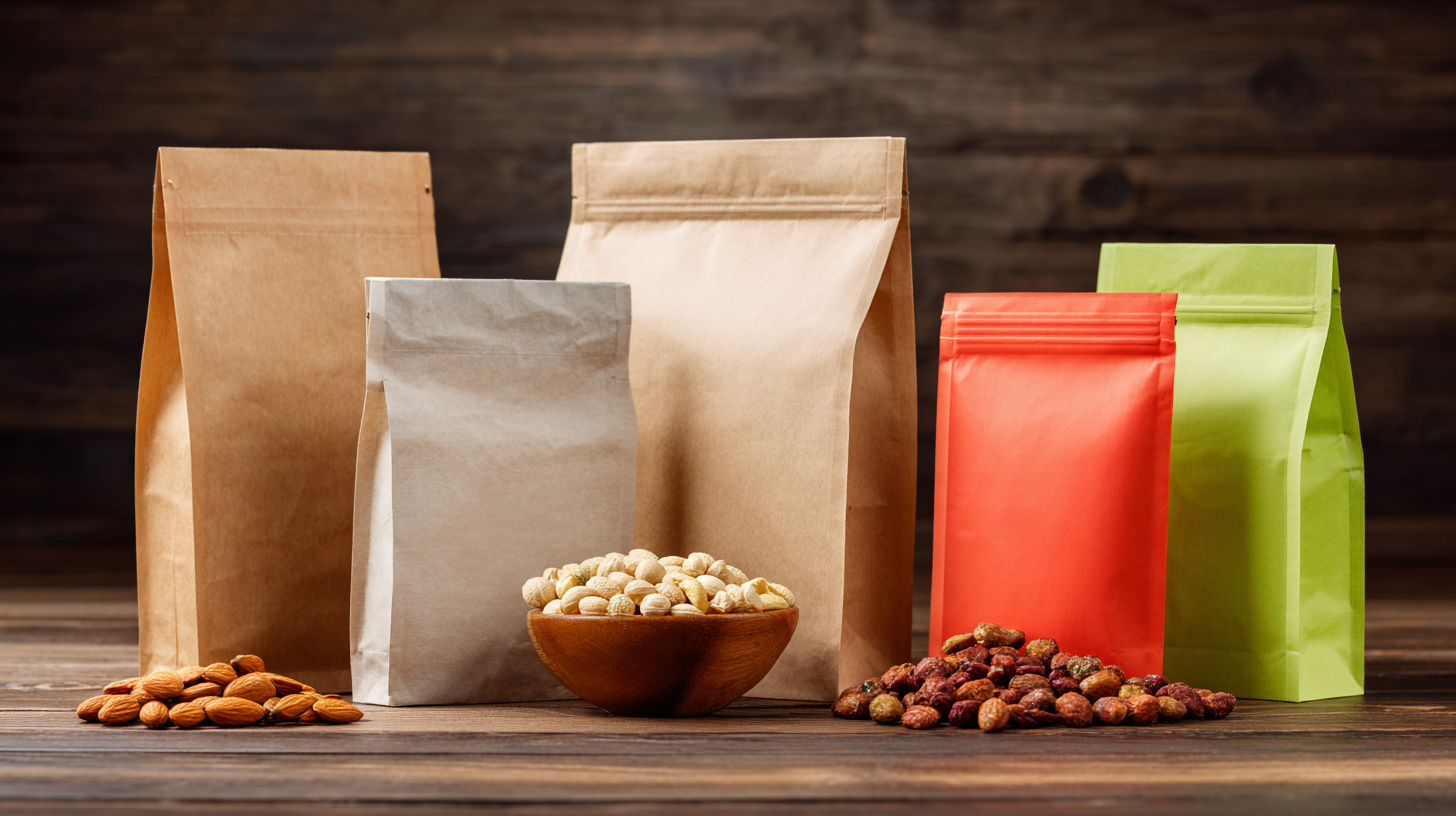Ultimate Guide to Selecting the Best Food Packaging Bags for Your Global Sourcing Needs
In today's competitive market, the importance of selecting the right Food Packaging Bag cannot be overstated. According to a recent report by Smithers Pira, the global food packaging market is expected to reach a staggering $429 billion by 2026, driven largely by the demand for convenient, sustainable, and safe packaging solutions. As consumers increasingly prioritize product quality and environmental impact, choosing the best food packaging options becomes crucial for businesses aiming to enhance their brand image and meet regulatory standards.

This Ultimate Guide aims to provide you with a comprehensive checklist that addresses key considerations when sourcing food packaging bags globally, ensuring your products not only stand out on the shelves but also cater to the modern consumer's needs.
Key Trends in Food Packaging Bags Industry for 2025
The food packaging bags industry is poised for significant growth as we approach 2025, driven by key trends that reflect changing consumer preferences and technological advancements. With the global vacuum packaging market projected to reach a staggering $32.91 billion by 2025, it is clear that demand for effective food preservation solutions is escalating. As consumers become increasingly aware of food safety and sustainability, manufacturers are compelled to innovate packaging designs that enhance product shelf life while minimizing environmental impact.
Simultaneously, the market is witnessing a surge in automation technology within packaging operations. The adoption of packaging robots and automated systems not only improves efficiency but also addresses labor shortages faced by the industry. This trend is set to expand as more companies integrate these technologies into their production lines, ensuring faster and more reliable packaging processes. Additionally, as the market shifts towards eco-friendly materials, companies are investing in sustainable options such as biodegradable and water-soluble packaging. Collectively, these trends reflect a dynamic evolution in the food packaging sector, highlighting the importance of aligning with global sustainability goals while meeting consumer demands.
Key Trends in Food Packaging Bags Industry for 2025
This chart illustrates the projected growth of key trends in the food packaging bags industry by 2025. The data reflects the percentage increase for sustainable packaging, convenience packaging, and biodegradable materials.
Essential Factors to Consider When Sourcing Food Packaging Bags
When sourcing food packaging bags, several essential factors must be taken into account to ensure product quality and compliance. First and foremost, material selection is crucial. According to a report by Smithers Pira, the global market for flexible packaging is expected to reach $300 billion by 2024, driven largely by innovations in materials such as recyclable, biodegradable, and high-barrier films. It’s important to choose materials that not only protect food from contamination but also minimize environmental impact.

Another key consideration is the regulatory landscape of the target markets. Organizations like the FDA and EFSA have stringent requirements concerning food safety. A report from Transparency Market Research indicates that 67% of consumers are more likely to purchase products with sustainable packaging, reflecting a growing trend towards eco-friendly solutions in food packaging. Thus, understanding local regulations and consumer preferences is vital in selecting the right packaging that assures safety while appealing to environmentally-conscious customers. Manufacturers must thoroughly evaluate their sourcing partners to ensure compliance with these regulations while also meeting the demands of sustainability.
Innovative Materials for Sustainable Food Packaging Solutions
The demand for sustainable food packaging solutions is more critical than ever, as consumers increasingly prefer eco-friendly options. According to a report by Smithers Pira, the global market for sustainable packaging is projected to reach $475 billion by 2026, highlighting a significant shift in consumer behavior and corporate responsibility. As companies seek to meet these evolving demands, innovative materials such as biodegradable plastics, plant-based films, and recycled paper products are becoming essential components of food packaging design.
Biodegradable plastics, derived from natural materials like cornstarch, are at the forefront of this trend. Research shows that these materials can decompose in commercial composting facilities within 90 to 180 days, significantly reducing landfill waste. Additionally, plant-based films, made from renewable resources, offer a viable alternative that maintains product integrity while minimizing environmental impact. A recent study by Market Research Future suggests that the plant-based packaging segment is expected to grow at a CAGR of over 15% from 2021 to 2027, indicating robust investment and innovation in this area. As global sourcing needs evolve, leveraging these advanced materials not only enhances sustainability but also aligns brands with the growing consumer preference for responsible packaging solutions.
Cost-Effective Strategies for Global Sourcing of Packaging Bags
When it comes to global sourcing of food packaging bags, understanding cost-effective strategies is essential for businesses looking to enhance their bottom line. According to a recent report by MarketsandMarkets, the global flexible packaging market is projected to reach $400 billion by 2025, driven largely by the increasing demand for convenient and sustainable packaging solutions. This trend underscores the importance of selecting the right packaging bags that not only meet regulatory requirements but also align with market demands for sustainability.
To optimize costs in sourcing packaging bags, companies should consider factors such as bulk purchasing and supplier negotiations. The Flexible Packaging Association indicates that purchasing in larger quantities can reduce per-unit costs significantly, often by up to 15%. Additionally, forging long-term partnerships with suppliers who offer competitive pricing and reliable quality can substantially minimize operational risks. Furthermore, local sourcing can help mitigate international shipping costs and delays, providing a more agile supply chain. Emphasizing these strategies can yield significant savings while ensuring your packaging solutions remain innovative and compliant in a dynamic market landscape.
Ultimate Guide to Selecting the Best Food Packaging Bags for Your Global Sourcing Needs
| Material Type | Use Case | Cost per Unit | Durability | Sustainability Rating |
|---|---|---|---|---|
| LDPE (Low-Density Polyethylene) | Snack Packaging | $0.05 | Moderate | C |
| PET (Polyethylene Terephthalate) | Beverage Packaging | $0.10 | High | B+ |
| PP (Polypropylene) | Food Storage Bags | $0.08 | High | B |
| Paper | Bakery Products | $0.15 | Moderate | A |
| Biodegradable Plastics | Eco-Friendly Packaging | $0.20 | Moderate | A+ |
How to Evaluate Suppliers for Reliable Food Packaging Solutions
When it comes to selecting a supplier for food packaging solutions, it's vital to establish a clear evaluation process that prioritizes safety, quality, and compliance with industry standards. Start by checking the supplier’s certifications, such as ISO and HACCP, which demonstrate their commitment to maintaining high standards in food safety and quality control. These certifications can also provide peace of mind that the materials used in their packaging are safe for food contact and meet regulatory requirements in your target markets.

Next, consider the supplier's track record and client testimonials. A reliable supplier should have experience working with businesses in your industry and be able to provide case studies or references that highlight their capabilities. Engaging in conversations with other clients can give you insights into their operational effectiveness, responsiveness, and ability to handle challenges. Additionally, assess their production capabilities—do they have the technology and resources to meet your specific packaging demands, including customization and scalability? This understanding will help ensure that your food packaging needs are met efficiently and effectively, giving you the competitive edge needed in a global market.

 中国
中国